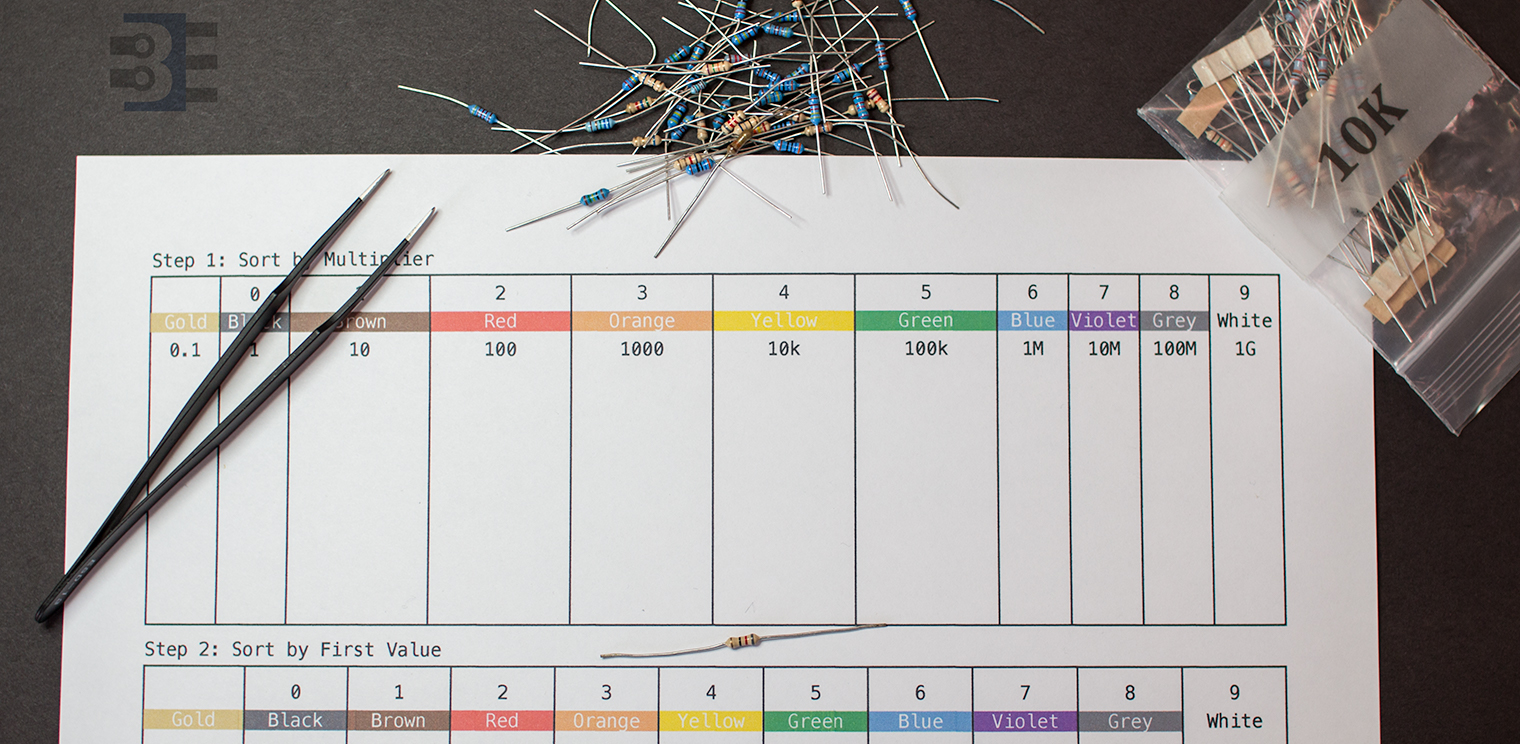Whether you are just getting started in electronics or you have boxes of parts, it is good to know what are the most critical parts to have in your kit. James asked the element 14 community for what they considered to be essential passive components like resistors, capacitors, switches, wires, and even diodes. In this video, he consolidated their puts and explains what to think about when buying these parts for your kit.
Learn how to use an LCR meter, such as the Tenma 72-10465, to measure reactive components. An LCR meter uses an AC signal at different frequencies to characterize capacitors, inductors, and even resistors. They can also provide impedance measurements. These include phase angle, ESR, quality factor, and dissipation factor.
You can even use the 72-10465 to sort components by their tolerance range.
Hey Newsletter Readers: Looking for Best Resistor Sorting Method? My Bad!
Here are some ideas of what you can do with the humble voltage divider. This elementary circuit has a few inventive uses. To be upfront, one of these uses is NOT as a voltage regulator. If you need a voltage regulated, get a voltage regulator! At some point or another, I’ve built all five of these voltage divider circuits. For me, the voltage level shifter is the most common.
- Measure Battery Voltage
- Signal Level Shifter
- Reference Voltage
- R-2R Ladder
- One Analog Input with Many Buttons
When you buy a grab bag of components, you might need to tackle sorting resistors. Here’s how I sorted some bags of random resistor assortments last week.
Objectives
Then method I use for sorting resistors achieves these objectives:
- Fewer Bins. It doesn’t take long to create a large matrix of resistor values. My resistor sorting method is relatively compact.
- Quick to find. When I’m building up a circuit, I don’t want to spend time sorting through a pile. Once I know the value I need, I find a single package and then look for a single color band.
- Works with 4-band and 5-band resistors. Let me be upfront: I *hate* 5-band resistor color codes. While the 5th ring is supposed to be slightly offset, or wider, or a different type of color; it doesn’t matter. It’s nearly impossible to tell read a 5-band resistor color code when they are in a pile. However, using my method for sorting resistors, it doesn’t matter if I’m looking at a 4-band or 5-band resistor. I can immediately identify the resistor value.
Based on #3 alone, you might be wondering what is the fantastic method (and how much will it cost to get it!) Here’s the basics of my method for sorting resistors. (For FREE!)
Think you can do without Pull-Up Resistors? Only Chuck Norris doesn’t need them.




